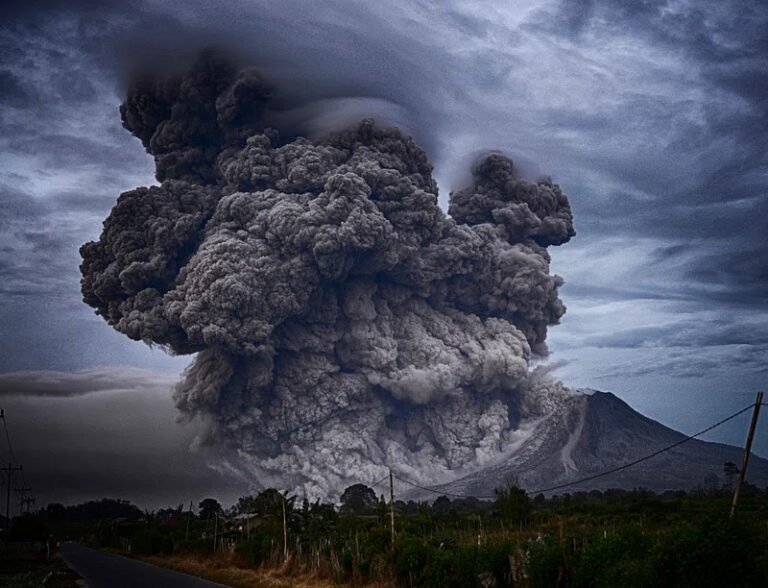What Did Gaylord Nelson Do for the Environment?
Gaylord Nelson’s journey started in the quiet town of Clear Lake, Wisconsin, where he was born on June 4, 1916. His father was the local doctor, and young Gaylord often accompanied him on house calls that took them through the woods, fields, and streams. Those early walks, surrounded by the raw beauty of nature, left a lasting impression. As Nelson later put it, he learned to love the natural world “by osmosis.”
Even as a teenager, that love turned into action. At just 14 years old, he led a community tree-planting campaign—something that, in hindsight, felt like an early sign of the environmental leadership that would define his life.
Nelson went on to earn a degree in political science from San Jose State University in 1939 and a law degree from the University of Wisconsin in 1942. He served in World War II, then returned home to build a career in law and politics. However, his work would eventually expand beyond the courtroom and state lines. His impact would stretch across generations and political divides.
His daughter, Tia Nelson, often shares how deeply the 1969 Santa Barbara oil spill affected him. It wasn’t just outrage—it was personal. That moment stirred something in him and became the spark that led to one of the most powerful environmental movements in history: Earth Day.

1. Founder of Earth Day (April 22, 1970)
In 1969, Senator Gaylord Nelson was deeply moved by the Santa Barbara oil spill. On a flight back to Washington, he read about how anti-war “teach-ins” were mobilising students, and he had an “aha” moment—what if communities across America hosted a similar day focused on the environment? That idea became Earth Day. On April 22, 1970, roughly 20 million Americans—students, activists, lawmakers, and everyday citizens—gathered at schools, parks, and city streets for teach-ins, cleanups, concerts, and marches.
The result wasn’t just a one-day rally—it was a turning point. Congress paused its work to join local events, reflecting an unprecedented level of public engagement. Seizing the momentum, lawmakers pushed through landmark legislation: by year’s end, the Environmental Protection Agency was born, and over the next few years, key acts were passed—including the Clean Air Act, Clean Water Act, Safe Drinking Water Act, and Toxic Substances Control Act—all accelerated by this newly awakened public concern.
The clean air goals laid out in the 1970 Clean Air Act have had dramatic effects: despite a 321% growth in GDP and a 63% population boom since 1970, six major air pollutants have dropped by about 73% by 2023. That’s proof positive that people-powered movements can lead to cleaner water, healthier ecosystems, and safer communities.
More than five decades later, Earth Day remains a powerful reminder of our collective potential. Recent studies highlight ongoing challenges—such as food waste generating methane, or microplastics drifting into the stratosphere—but they also show that the foundation Nelson laid continues to support scientific research, community action, and policy innovation.
Video Highlight
Watch Nelson rallying support days before the first Earth Day:
2. Landmark Environmental Legislation
As U.S. Senator (1963–1981), Nelson was a driving force behind several foundational laws that reshaped American environmental policy.
According to the Nelson Institute of Environmental Studies, he championed the Wilderness Act of 1964, which created the National Wilderness Preservation System, and supported the National Trails System Act, securing long-term protection for iconic paths like the Appalachian Trail. He also helped pass the Wild and Scenic Rivers Act, safeguarding countless rivers and streams, and played a pivotal role in establishing the Apostle Islands National Lakeshore, preserving Wisconsin’s Lake Superior shoreline.
In 1973, Nelson’s influence extended to the Endangered Species Act, a landmark law that created legal gears for protecting species at risk of extinction—a legacy confirmed by environmental historians as a keystone in modern conservation.
He introduced the first fuel-efficiency standards for automobiles, pushing federal mandates in an era before oil crises made regulations urgent. He also sponsored groundbreaking bills to regulate strip mining, ban phosphates in detergents, and prohibit harmful chemicals like DDT and 2,4,5‑T. These initiatives set the stage for thicker legislation that formalised America’s pollution controls.
Nelson was an early and vocal advocate for stronger pesticide bans and emissions controls. His role earned him the title of ‘founding father of the modern environmental community’ from leaders across the field.
3. Conservation in Wisconsin (Governor, 1959–1963)
As Governor of Wisconsin from 1959 to 1963, Nelson launched the Outdoor Recreation Acquisition Program (ORAP), funded by a clever penny‑per‑pack cigarette tax. This innovative funding stream let Wisconsin build up its public landholdings, adding over a million acres of parks, forests, wetlands, and wildlife preserves during his tenure. Today, these early acquisitions anchor the state’s robust outdoor economy—fueling an estimated $11 billion tourism industry, a $22 billion forestry sector, and $4 billion in hunting and fishing revenue.
Nelson didn’t just acquire land; he laid the groundwork for the ongoing Warren Knowles–Gaylord Nelson Stewardship Program. Since 1990, that program has received nearly $1.3 billion in funding, protecting natural spaces that deliver over $2 billion in annual benefits, from climate regulation and flood mitigation to improved mental health.
Nelson also consolidated fragmented natural‑resource agencies to streamline conservation efforts, ensuring teams worked in sync rather than in silos. In doing so, he prioritised real outcomes—like wetland restoration, forest health, and wildlife protection—over bureaucracy. He likewise created Wisconsin’s version of the Youth Conservation Corps, inspired by New Deal-era models. This program connected young people to real “green jobs,” supporting both environmental work and community resiliency.
Nationwide, Conservation Corps programs have shown impressive results: every $1 invested returns about $10 in economic benefits to local communities through job creation, tourism dollars, and improved ecosystem services. Studies also show that youth who participate gain valuable life and job skills—confidence, independence, teamwork, and a deeper connection to nature.
4. Continued Advocacy with The Wilderness Society
Post‑Senate, Nelson served as counsellor (1981–2005) for The Wilderness Society, where he fought to protect public lands—such as Alaska’s Arctic Refuge and vast wilderness areas in the Pacific Northwest—from potential drilling or industrial intrusion. According to The Wilderness Society, he helped lead efforts opposing oil and gas leasing on the Arctic Refuge, stressing the area’s immense vulnerability to ecological damage and its importance to Indigenous communities and wildlife alike.
Nelson firmly believed that our economy depends entirely on the environment. He often said, “The economy is a wholly owned subsidiary of the environment,” reminding us that when nature suffers, so do jobs, resources, and prosperity. With this conviction, he stood against any attempt to weaken environmental protections, whether in Congress or federal agencies.
Even beyond land preservation, he pushed for sustainable population policies and environmental education, including the National Environmental Education Act and supporting environmental curricula in schools. He believed early awareness would build a culture of stewardship, and today’s programs bear that foundation.
Nelson’s work with The Wilderness Society also included innovative strategies to protect sensitive landscapes. For instance, he backed campaigns urging banks to refuse financing drilling in pristine areas like the Arctic Refuge, highlighting how financial tools could influence conservation outcomes.
Legacy and Honours
In 1990, he was honoured with the Ansel Adams Conservation Award, presented to federal officials who demonstrate extraordinary commitment to land ethics and conservation efforts. Two years later, in 1992, the United Nations Environment Programme recognised his global environmental leadership with the Only One World Award.
Perhaps his most renowned honour came in 1995 when President Bill Clinton awarded him the Presidential Medal of Freedom—the highest civilian award in the United States—in commemoration of Earth Day’s 25th anniversary. Clinton’s citation emphasised Nelson as “the father of Earth Day.”
Nelson’s legacy extended into education and preservation. In 2002, the University of Wisconsin–Madison renamed its Institute for Environmental Studies in his honour, cementing his influence on future generations of environmental scholars. Two years later, 80 % of the Apostle Islands National Lakeshore was designated the Gaylord Nelson Wilderness—Wisconsin’s largest wilderness area—to honour his pivotal role in its creation.
Everyday Lessons from Nelson’s Legacy for Environmental Action
Gaylord Nelson’s legacy reminds us that real environmental progress comes when policy meets people’s power. He knew that passing laws wasn’t enough—you have to connect with communities, educate them, and give them tools to act. It’s that mix of top-down and bottom-up change that truly works.
Nelson emphasised that education should be part of everyday life, not just something taught once a year. He believed children should grow up talking about nature at the dinner table and learning about the environment in every subject. This idea holds strong today—according to the EPA, school programs that combine classroom learning with community projects lead to stronger lifelong environmental habits.
He also taught us to “think globally, act locally.” That might sound cliché, but it’s powerful. A small village in Guatemala, for example, restored its forests with local effort and determination, leading to cooler temperatures and cleaner air.
Nelson believed in using every tool available—teach-ins, legislation, cleanups, protests, even storytelling. A 2023 study of the Zoo ALIVE youth-engagement program found that nearly 85% of participants identified having a voice in local awareness campaigns (often led by students or volunteers) as the most powerful motivator for their ongoing civic environmental action.
Most importantly, he stressed mentoring future advocates. Supporting youth-led environmental clubs or simply encouraging a young person to get involved can shape the next Gaylord Nelson. In India, one village’s youth-led waste initiative earned national recognition and a place in school textbooks.
Learn More: 10 Environmental Conservationists You Should Know
Conclusion: A Pathway to Stewardship
Gaylord Nelson’s journey from a rural Wisconsin childhood to founding Earth Day reflects a life where personal conviction drove national transformation. He showed that civic engagement, social equity, and bold policy can together create enduring environmental change.
His life reminds us: Earth is not a luxury, it’s a necessity. Nelson’s legacy invites every person to become an environmental steward through local action, community building, and political advocacy.







